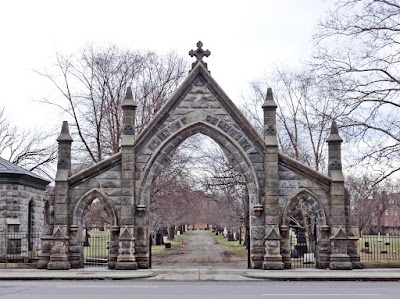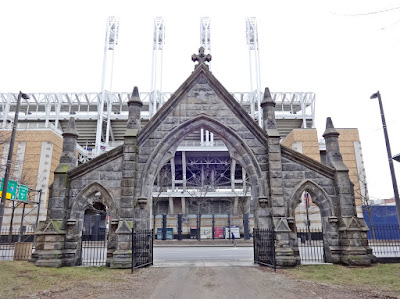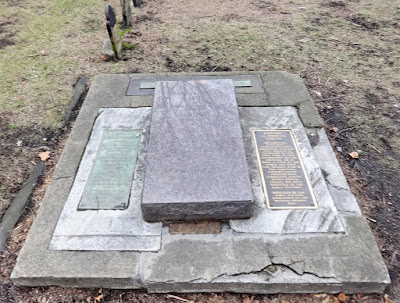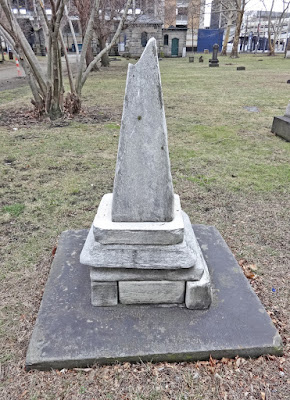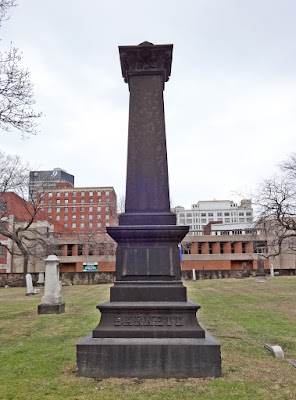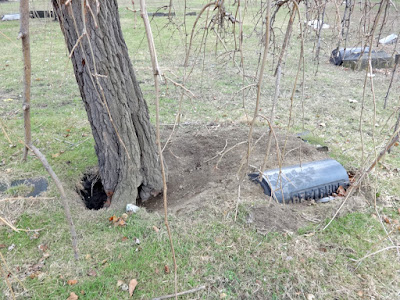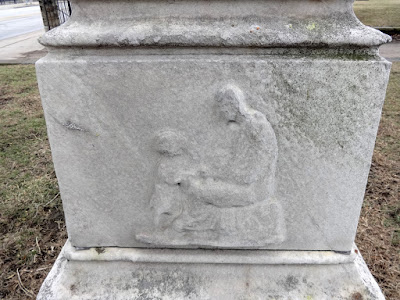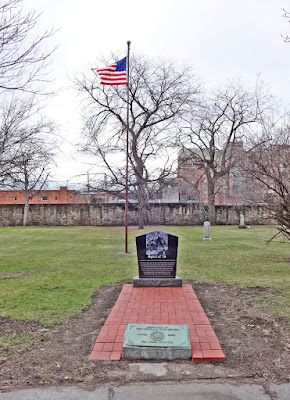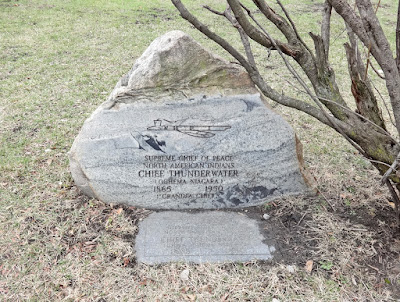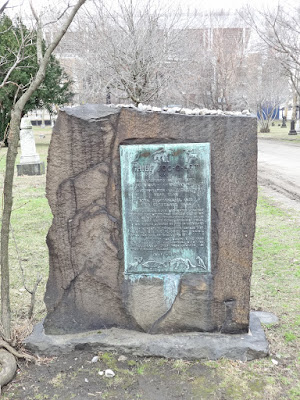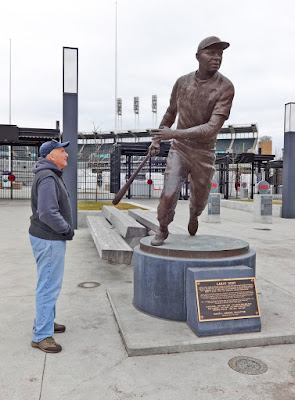Sunday, January 24, 2016
Sunny, but 16 degrees today.
Another breakfast and an offer by the innkeeper to take some cookies for the road!
Before any museums opened, we drove downtown to see the
Allegheny County Courthouse, part of a complex that includes the county jail, designed by Henry Hobson Richardson in Romanesque Revival style and which he considered his finest work.
 |
| Allegheny County Courthouse (1884-1889) |
A bridge inspired by the Bridge of Sighs in Venice connects the courthouse with the building that holds the jail.
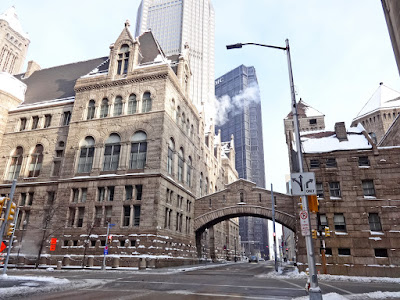 |
| Pittsburgh's Bridge of Sighs (KSS) |
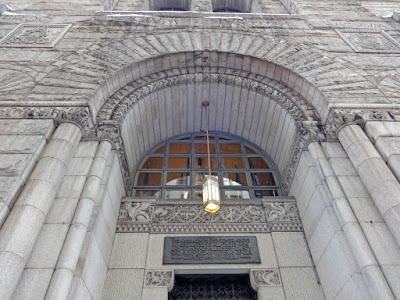 |
Allegheny County Courthouse detail showing the rusticated
blocks of granite, a Syrian arch, and Byzantine capitals |
 |
| Allegheny County Courthouse courtyard |
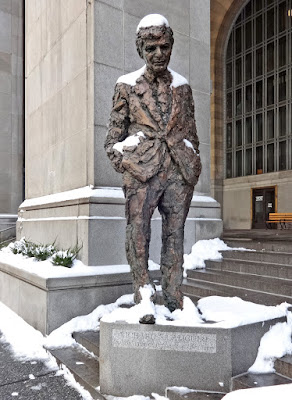 |
Statue of Mayor Richard S Caliguiri (1990
by Robert Berks) in front of the Pittsburgh
City-County Building; Caliguiri
served from 1977 until his death in 1988 |
 |
Across the street men were power washing;
remember that it was 16 degrees F! |
We drove a bit uptown to the
Senator John Heinz History Center, which moved to 1212 Smallman Street in 1996. The 1898 building was formerly the Chautauqua Lake Ice Company Warehouse, designed by Frederick Osterling.
 |
| 1944 M4A3(76)W HVSS Sherman Tank |
The Great Hall on the first floor of the Heinz History Center displays vehicles.
 |
| Heinz Hitch (late 19C) by Studebaker in South Bend, IN |
 |
Pittsburgh Streetcar #1724 (1948),
a PCC car by St Louis Car |
PCC takes its name from the design committee (Presidents' Conference Committee) formed in 1929 to improve and standardize the streetcar. The style lasted from 1936 to 1952.
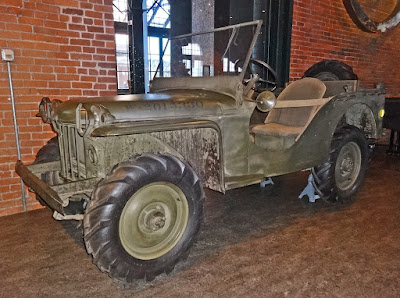 |
Bantam Reconnaissance Car #1007 (1940),
one of the very first jeeps that was developed
by the American Bantam Car Company in Butler, PA |
The second floor has the exhibit of Pittsburgh innovations.
 |
The poster, inspired by women like
Rosie the Riveter, was designed by
J Howard Miller of Pittsburgh in 1942,
to boost morale at Westinghouse |
 |
The Baldwin vertical piano (c. 1940s) of Mary Lou Williams,
a New York City jazz icon who was born in Atlanta, GA,
but grew up in the East Liberty neighborhood of Pittsburgh |
Mary Lou Williams was a visitor to neighbors of Bert & Ada in Rocky River, OH.
 |
Elecktro (1937), the first voice animated robot,
built by Westinghouse, and his dog, Sparko (1940);
Elecktro appeared at the 1939 New York
World's Fair with Sparko joining him in 1940 |
The Western Pennsylvania Sports Museum took up half of both the second and third floors, which means they have plenty of room to grow.
 |
Superhero Franco Harris scooping up the ball
for his "Immaculate Reception" |
 |
Women were included!
Women's athletic costume
and exercise hoop (c. 1940) |
One of the museum highlights is the Heinz exhibit on the fourth floor. Henry John Heinz founded the H J Heinz company, started in 1888, and he adopted the slogan "57 Varieties" in 1892/1896. He remained the president of the company until his death at age 74.
The company was known for fair treatment of its employees and safe and sanitary food preparation. It is now a global company with its headquarters in Pittsburgh.
H J Heinz is the great-grandfather of H John Heinz III, who was to become a US Senator for Pennsylvania. The History Center is named for Senator Heinz.
 |
Ten-year old Henry John sold produce
from his mother's garden |
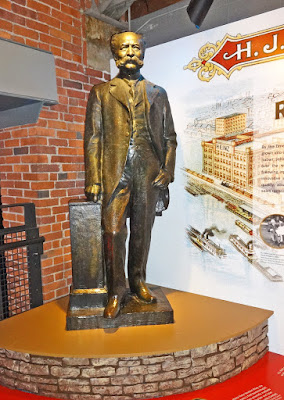 |
| As president of H J Heinz |
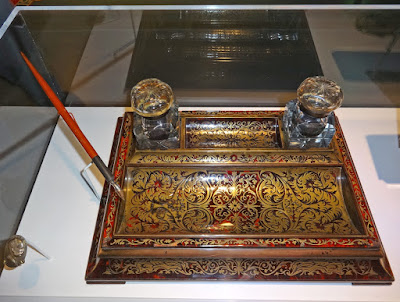 |
| His desk set (c. 1900) |
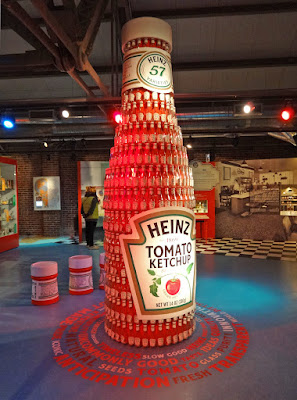 |
Eleven-foot ketchup bottle made
from 400 bottles |
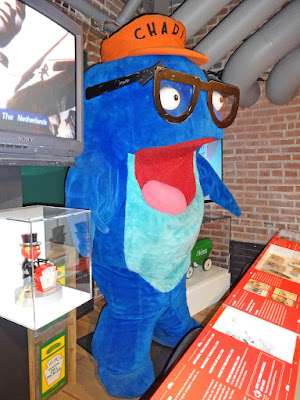 |
| Charlie the Tuna costume |
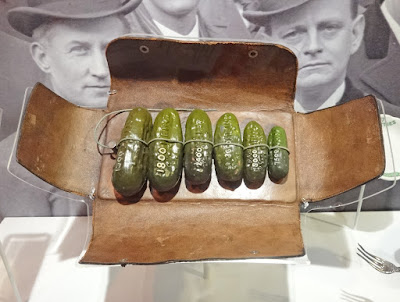 |
| Salesman's pickle sizing sample case (c.1900) |
Heinz regulated the size of pickles and thus was able to determine how many pickles were in each barrel sold, while competitors randomly packed theirs and the grocers never knew how many they were getting to accurately calculate a profit.
 |
Bottles from his first companies (1869-1873) of
Heinz and Noble, and Anchor Pickle & Vinegar Works |
 |
Pickle pin collection, including the first, actually
a watch charm, from the 1893 World's Fair in Chicago |
An exhibit on Glass: Shattering Notions on the fourth floor.
 |
Form and function:
A rose leaf jar (1924-1927) and
signal light (c.1940) |
 |
Lemonade set (c. 1925) by Joseph Locke,
and citrus reamers |
Half of the fourth floor contained the Special Collection Gallery that is considered to be an open storage gallery. The collections feature neighborhoods and people of the region, and also includes Mister Rogers' Neighborhood!
 |
The Great Oak Tree with Henrietta Pussycat's house
and the door to X the Owl's home |
 |
Mr Rogers in his iconic outfit, sitting on his bench,
with Picture Picture behind him |
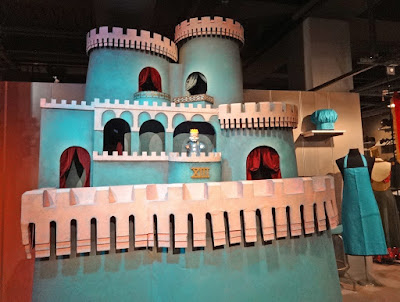 |
King Friday the XIII's castle, and
Chef Brockett's hat and apron |
The fifth floor exhibit was Clash of Empires, about the French & Indian Wars. This was the only exhibit to have bilingual labels (in English and French!)
 |
| Bilingual label |
The Heinz History Center had a SmartSteps program to encourage you to use the stairs. At each floor you embossed your card, and when you filled it, you could redeem it for a prize (a pickle pin!)
 |
| Kent embossing |
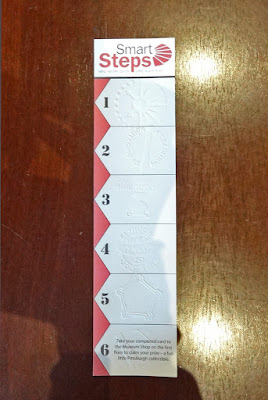 |
| Our completed card |
On a whim, we purchase a small box of chocolate-covered pickles as a souvenir. It took a while to work up the courage to try them.
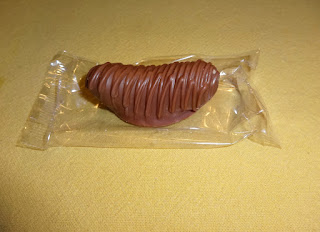 |
| Chocolate-covered pickle |
Being a chocolate-covered sweet gherkin, it was just sweet!
Outside, there was so much traffic, and we knew all those people in the parking lot were not in the museum. There was a Remodeling Expo at the nearby convention center. But we also had a problem parking in the Strip District, where we had lunch.
We went to a "Pittsburgh institution" to have a "Pittsburgh tradition" of a
Primanti Brothers sandwich. It doesn't matter what kind of sandwich you order, but at Primanti's, you know it will have tomato slices, cole slaw, and French fries in between slices of soft Italian bread!
 |
| Kent's tunafish sandwich |
 |
| Cross-section of my double egg and cheese sandwich |
Of course, we could only manage half the sandwich, taking the rest home to Cleveland, where we headed right after lunch.
